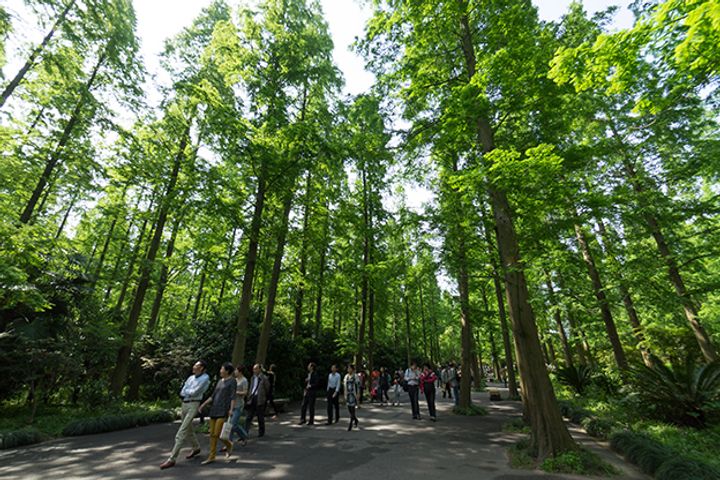 NASA Satellite Images Credit China With One-Fourth of World's New Greening
NASA Satellite Images Credit China With One-Fourth of World's New Greening(Yicai Global) Feb. 14 -- China contributed to a quarter of the world's human-caused greening observed between 2000 to 2017, ranking it first in the world, latest satellite data by the US National Aeronautics and Space Administration (NASA) shows.
The area of global greening expanded by 5 percent between 2000 and 2017, of which China and India contributed over one-third, though they have only 9 percent of the planet's vegetated land between them, show results researchers published Feb. 11 in Nature Sustainability magazine, which is published by UK-based Springer Nature.
In China, 42 percent of re-vegetation was from forests, with croplands supplying 32 percent. The country is undertaking massive programs to preserve and enlarge forests to minimize land degradation, remediate pollution and prevent climate change. Of India's greening, croplands supplied 82 percent and forests just over 4 percent.
China performed well in both afforestation and farmland cultivation and its share is all the more impressive in that it has a mere 6.6 percent of the world's green landmass, per the study conducted by a team from universities and institutes in the US, Germany, Denmark, Norway, China, India and France, and which included a NASA researcher.
Forest expansion was behind 42 percent of China's greening, with cultivated farmland adding 32 percent. In India, 82 percent of the greening came from new cropland. Multiple cropping enables farmers to grow more produce on the same area of land.
Both countries are densely populated. A belief prevails that populous countries' excessive land use degrades it, but these latest research results tend to refute that view.
The area of land under cultivation in China and India has not changed much in the past decade, yet their area of vegetation cover has risen greatly even as their food production has risen more than 35 percent since 2000, the researchers noted.
The scientists cautioned against complacency over future growth of the globe's green zones. Tropical rain forests are receding in many places and increasing vegetation in other areas will do little to cushion the ecological impact of this devastation.
The study's abstract, which also cited climate change and fertilizer use as factors driving the re-vegetation, concluded by highlighting "the need for a realistic representation of human land-use practices in Earth system models."
Editor: Ben Armour